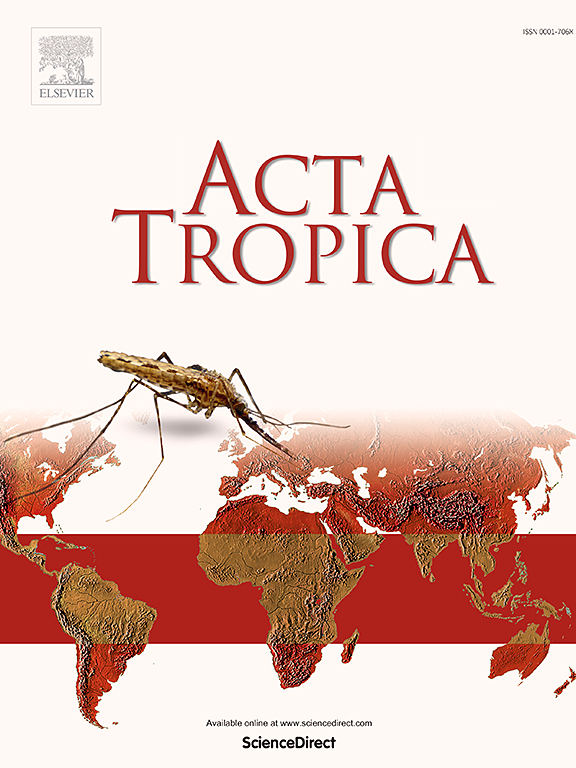Rapid molecular method for early detection of the invasive mosquito Aedes aegypti (Linnaeus, 1762) at Points of Entry
IF 2.1
3区 医学
Q2 PARASITOLOGY
引用次数: 0
Abstract
In recent years, globalization and climate change have led to a rise in the number of imported cases of Aedes-diseases in Europe, resulting in increased frequency and magnitude of local transmissions due to the presence of competent vectors. Recently, Italy has experienced the establishment of three exotic Aedes mosquitoes relevant to human health, Aedes albopictus, Aedes koreicus and Aedes japonicus. Aedes aegypti, the primary vector of dengue and yellow fever, distributed in tropical and subtropical regions, has recently reappeared in Europe and the risk for its re-introduction in Italy is high given the climatic conditions suitable for the species.
To address the risk of introduction and spread of Aedes-diseases, the Health Authorities recommend the strengthening of entomological surveillance at regional level, particularly in strategic areas and Points of Entry, such as ports and airports.
In 2021, a Korean research team developed a multiplex-PCR assay for the identification of six Aedini species, not including Ae. aegypti. In the present study, the previous diagnostic test was improved by designing reverse primers for the identification of Ae. aegypti and Aedes geniculatus. This latter native mosquito lays eggs morphologically similar to those of invasive species with which it can sometimes be found in sympatry. Furthermore, a ten-minute DNA extraction method was implemented. The results obtained demonstrate a perfect diagnostic capacity and sensitivity of the method in discriminating the five species tested.
Here, findings of a sensitive, rapid and cost-effective molecular assay developed for the early identification of invasive species at high-risk sites are shown.

入境口岸入侵性埃及伊蚊(Linnaeus, 1762)的快速分子检测方法。
近年来,全球化和气候变化导致欧洲输入的伊蚊病病例数量增加,由于存在有能力的病媒,导致当地传播的频率和规模增加。最近,意大利出现了与人类健康相关的三种外来伊蚊,白纹伊蚊、朝鲜伊蚊和日本伊蚊。埃及伊蚊是登革热和黄热病的主要病媒,分布在热带和亚热带地区,最近在欧洲重新出现,鉴于适合该物种的气候条件,它在意大利再次被引入的风险很高。为了应对伊蚊疾病传入和传播的风险,卫生当局建议加强区域一级的昆虫学监测,特别是在战略地区和口岸和机场等入境点。韩国研究小组在2021年开发了多重聚合酶链反应(multiple - pcr)方法,对伊蚊以外的6种伊迪尼进行了鉴定。蚊。本研究通过设计反引物对伊蚊的诊断方法进行改进。埃及伊蚊和膝纹伊蚊。后一种本地蚊子产的卵在形态上与入侵物种相似,有时可以发现它们是同属的。此外,还实现了一种10分钟DNA提取方法。结果表明,该方法具有较好的诊断能力和灵敏度。本文展示了一种灵敏、快速、经济高效的分子检测方法,用于高风险地区入侵物种的早期识别。
本文章由计算机程序翻译,如有差异,请以英文原文为准。
求助全文
约1分钟内获得全文
求助全文
来源期刊

Acta tropica
医学-寄生虫学
CiteScore
5.40
自引率
11.10%
发文量
383
审稿时长
37 days
期刊介绍:
Acta Tropica, is an international journal on infectious diseases that covers public health sciences and biomedical research with particular emphasis on topics relevant to human and animal health in the tropics and the subtropics.
 求助内容:
求助内容: 应助结果提醒方式:
应助结果提醒方式:


